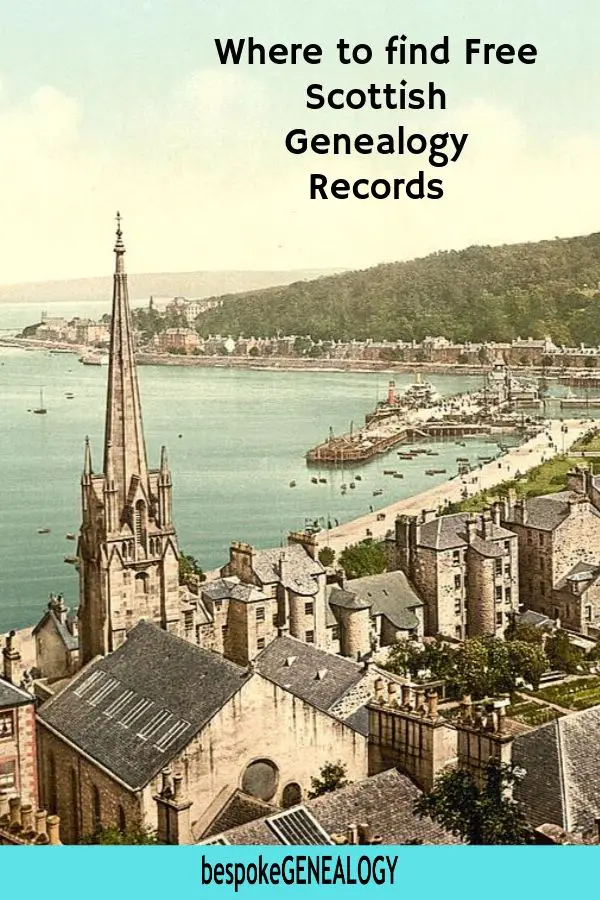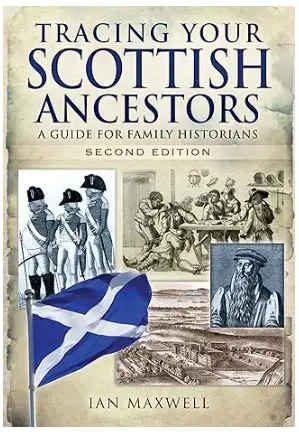Update July 2025: The Scotland’s Places website was closed down in June 2025. The SP links in this article have therefore been removed. The material on the Scotland’s Places website can now be found on the following sites:
- HES material can be found on trove.scot.
- NLS material can be found at nls.uk and maps.nls.uk.
- NRS records will be accessible through scotlandspeople.gov.uk.
For more information, please see this article on the Historic Environment website.
As I mentioned in a previous post (How to find your Scottish Ancestry), Scotland has some of the best online genealogy resources anywhere in the World. However, one website that is often overlooked by family historians researching their Scottish roots is ScotlandsPlaces. This is a pity as ScotlandsPlaces has loads of really useful record sets, many of which date from the 1700s or earlier. So this post is a look a ScotlandsPlaces, an amazing free resource.

Background
ScotlandsPlaces was launched in 2009 and is a collaboration between three Scottish archives – Historic Environment Scotland, the National Records of Scotland and the National Library of Scotland. The site originally charged a subscription, but since 2016 it has been completely free to access all its records.
The site is effectively a sister site to ScotlandsPeople and contains historical tax rolls as well as other records relating to places in Scotland such as Ordnance Survey Name Books, maps, photographs, drawings and archaeological records.
As well as access to scanned images of original documents there are also transcriptions for most of them.
Records
Tax Rolls
The site has access to a very interesting range of tax records:
- Carriage tax rolls, 1785-1798
- Cart tax rolls 1785-1798
- Clock and watch tax rolls 1797-1798
- Consolidated Schedules of Assessed Taxes, 1798-1799
- Dog tax rolls 1797-1798
- Farm horse tax rolls 1797-1798
- Female servant tax rolls 1785-1792
- Hearth tax records 1691-1695
- Horse tax rolls, 1785-1798
- Inhabited House Tax, 1778-1798
- Land tax rolls 1645-1831
- Male servant tax rolls 1777-1798
- Poll tax rolls, 1694-1698
- Shop tax rolls, 1785-1789
- Window tax, 1748-1798
As only the wealthier members of society paid taxes during these times, you won’t find many of the working classes listed on these rolls. However, if your ancestors were in service, you may find them named on the servant tax rolls.
Ordnance Survey Name Books
These books were compiled during the surveying of the first edition Ordnance Survey maps of Britain in the mid 19th century. They contain a rich detail of the terrain surveyed including significant rocks, beaches, farms and houses.
Here are a couple of example entries from a single page to give an idea of the type of information recorded in these books:
Ref OS1/3/8/8. Ayrshire OS Name Books, 1855-1857, Volume 8, page 8.
- Airloch – At the South of plan. about 9 chains S of Airloch Knowe.
A farm house with out offices Situated adjacent to & N of Ballochdoan- built of lime & Stone, one storey high and in good State of Repair.-
Property of J. C. Moore - Airloch Knowe – South West of & adjacent to Craigangaoth
A Knoll adjacent to and North of Earlic from which it takes its name. There is a Trigl. Station on it. Property of J. C. Moore
Most entries link to the relevant Ordnance Survey map.
Maps and Plans
Many of the records on ScotlandsPlaces link to relevant maps and plans. The maps also link to the National Library of Scotland site where the maps are held. Here you are able to zoom in on the maps for greater detail.
Other Records
ScotlandsPlaces also gives access to some photograph collections, archaeological records, reports and publications. For a full list see the Records page.
How to use ScotlandsPlaces
The site is very easy to use. If you want to browse a record set, simply go to the Records page and select a link. You’ll notice that some records, like the Ordnance Survey maps aren’t browsable. You can only access these when you search for a specific place.
The best way to search for records is to use the Places page.

ScotlandsPlaces Places Page
Enter the name of a place where your ancestor lived and search. As an example, I searched for the place called Aberfeldy which was in the old county of Perthshire.

Search results for Aberfeldy
The search result gives me a short paragraph about the place and links to record sets relating to it. In this case (above) there are 3 record sets available – land tax rolls, health reports and the local Ordnance Survey Name Books. Drilling down gives more details about the records:

Aberfeldy records
Drilling down further will take you to the actual record with a transcription as well as links to maps etc.
Even if you don’t find any records relating to a specific person, you should find useful information about the place where your ancestor lived in Scotland. These place records are especially useful if your ancestor lived in a fairly remote area. In this case you should find details which are not available anywhere else.
Happy researching!
For more useful Scottish websites and information see:
- How to find your Scottish Ancestry
- Where to find British and Irish Burial Records
- Scottish Genealogy: Making the Most of Scotland’s People
- Free Scottish Archive Directory and Parish Records Guide
- 15 Useful Free Scottish Genealogy Resources
For further reading you may find these books helpful:
Please pin a pin to Pinterest:















Leave A Comment